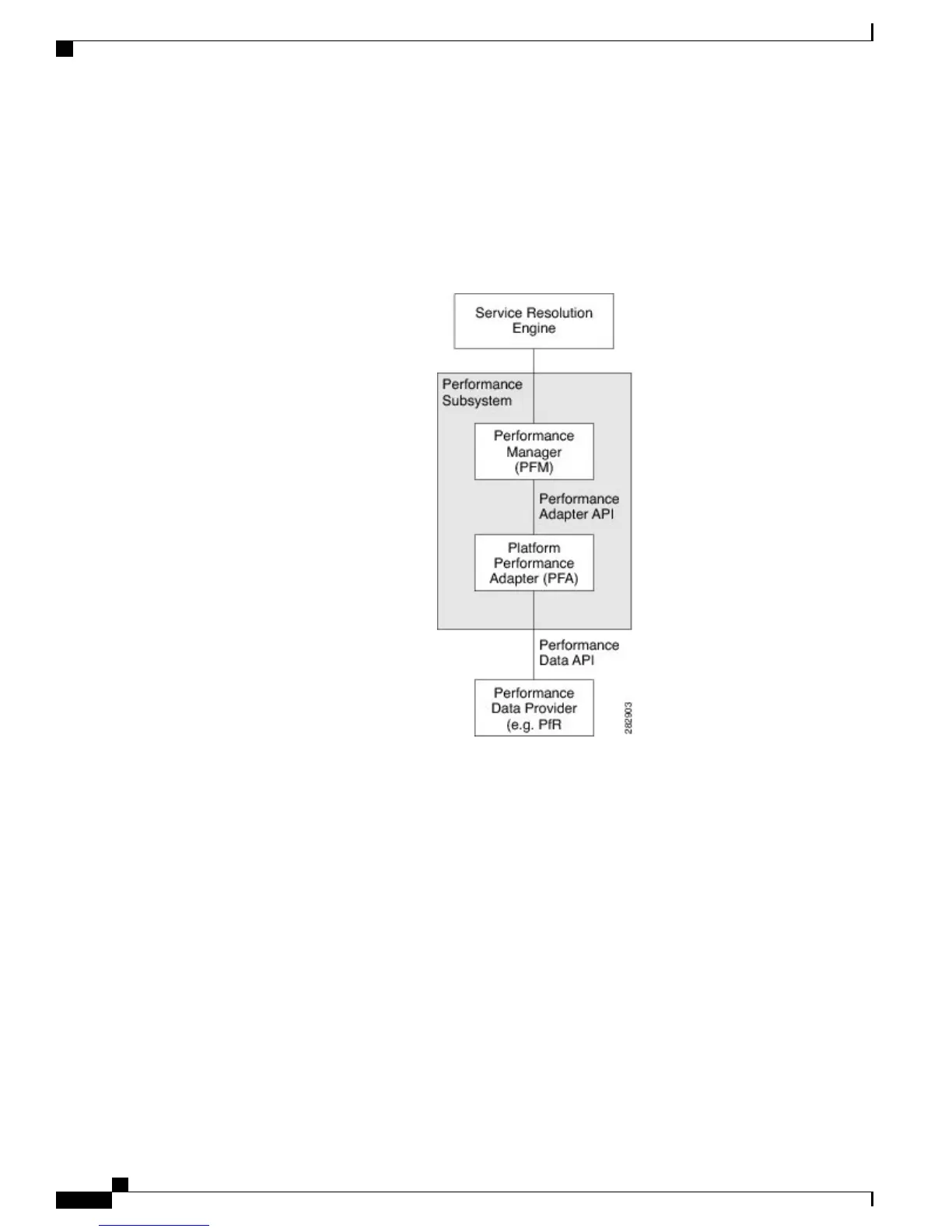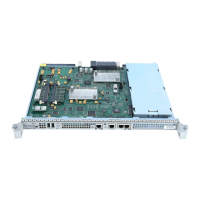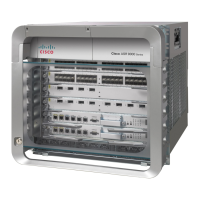• Loss—statistics on packet loss to a destination
• Reachability—statistics on packets sent to an unreachable destination
The PFS uses Performance Routing (PfR) to obtain this data. The PFS parses requests that it receives from
the SRE and derives data from PfR to satisfy the requests.
Figure 1: Performance Subsystem
The PFS contains two main components:
•
Performance Manager (PFM)—Platform independent sub-component that provides performance data
(delay, jitter, and reachability) between the service origination point and each candidate data center. The
PFM runs on both CE-facing and DCE-facing PE routers.
•
Performance Adapter (PFA)—Platform dependent adapter that retrieves performance data for the PFM
from the Performance Data Provider (PDP), which is a platform-dependent service located outside the
performance subsystem. The PFA and PDP only run on CE-facing PE routers.
Extensible Messaging and Presence Protocol Client Registration
PFM peers that are located on different PE devices communicate with each other using the Extensible Messaging
and Presence Protocol (XMPP). XMPP uses the request-response mechanism. Therefore, each peer must be
recognizable to the XMPP server (in other words, have a Jabber ID [JID]) before a connection can be
established.
The information in peer notifications includes:
Cisco Network Positioning System Configuration Guide for the Cisco ASR 1000 Router, Release 1.0
12 OL-25794-01
Configuring Performance Metrics to Select a Service
Extensible Messaging and Presence Protocol Client Registration

